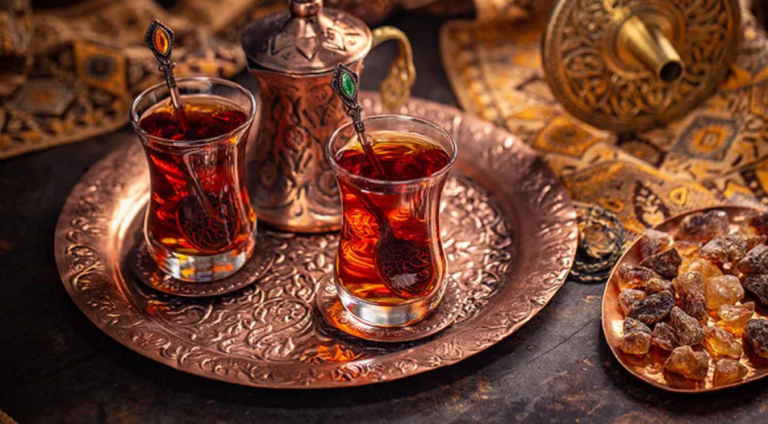When it comes to the world of tea, Persian tea holds a unique and revered place. This ancient beverage, steeped in rich cultural history, is renowned for its captivating aroma, robust flavor, and the sheer pleasure it brings to those who partake in its ritual.
If you’ve ever wondered how to brew authentic Persian tea, you’ve come to the right place.
In this comprehensive guide, we’ll delve into the art of making Persian tea, uncovering the secrets that have been passed down through generations.
Whether you’re a tea enthusiast looking to explore new horizons or simply curious about this beloved tradition, you’ll find everything you need to know to master the art of brewing the perfect cup of Persian tea.
What is Persian Tea?
Persian tea, also known as Iranian tea, is a distinctive style of tea that originates from the beautiful and culturally rich nation of Iran.
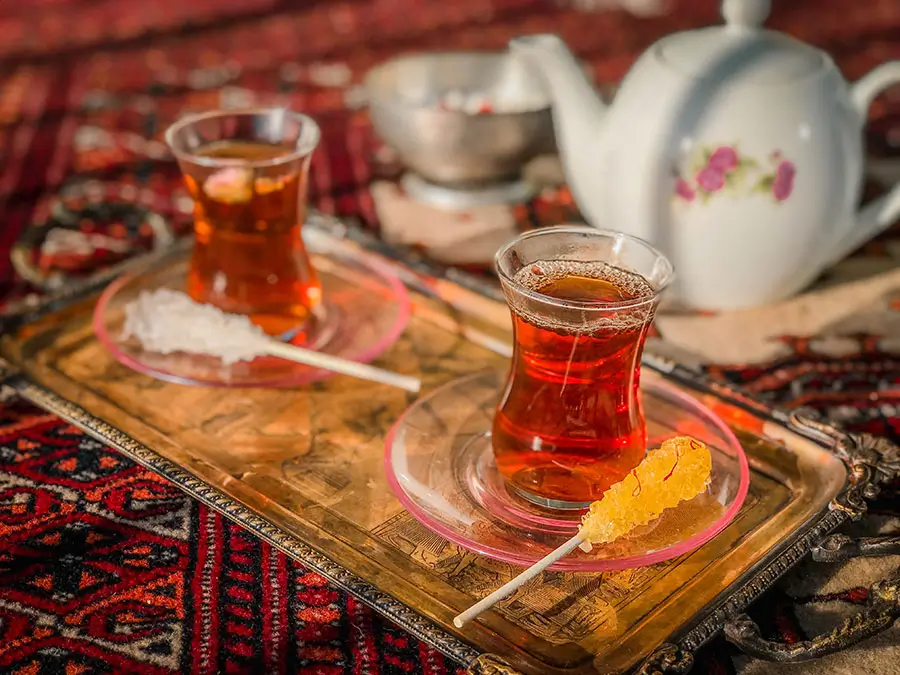
Unlike the more commonly known black and green teas, Persian tea is brewed using a unique blend of black tea leaves, often enhanced with the fragrant essence of bergamot.
The result is a captivating infusion that boasts a deep, robust flavor and an unmistakable aroma that is both comforting and invigorating.
Persian tea is not only a beloved beverage, but also an integral part of the country’s social and cultural fabric, serving as a centerpiece for gatherings, celebrations, and moments of tranquility.
The History and Significance of Persian Tea
The origins of Persian tea can be traced back to the 17th century when it was first introduced to the region.
Initially, the tea was imported from China, but over time, the Iranian people developed their distinct method of cultivating, processing, and brewing this treasured leaf.
Persian tea quickly became more than just a drink; it evolved into a symbol of hospitality, tradition, and national pride.
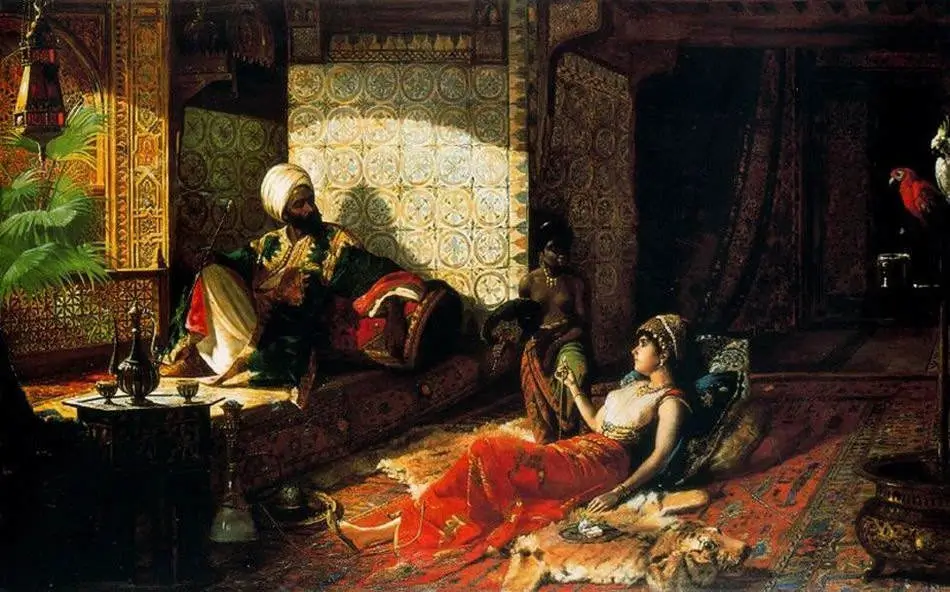
In the vibrant tea houses and elegant homes of Iran, the ritual of brewing and serving tea became a revered art form, with each step meticulously perfected to create the perfect cup.
Today, Persian tea remains an integral part of Iranian culture, playing a central role in everyday social interactions, religious ceremonies, and even political negotiations.
It is not uncommon to see Iranians gathering around the table, sipping their tea, and engaging in lively conversations that can last for hours on end.
How to Make Persian Tea
Now that you understand the rich history and cultural significance of Persian tea, let’s dive into the step-by-step process of how to make Persian tea.
Mastering the art of Persian tea-making may take some practice, but once you’ve got the hang of it, you’ll be able to enjoy the perfect cup anytime, anywhere.
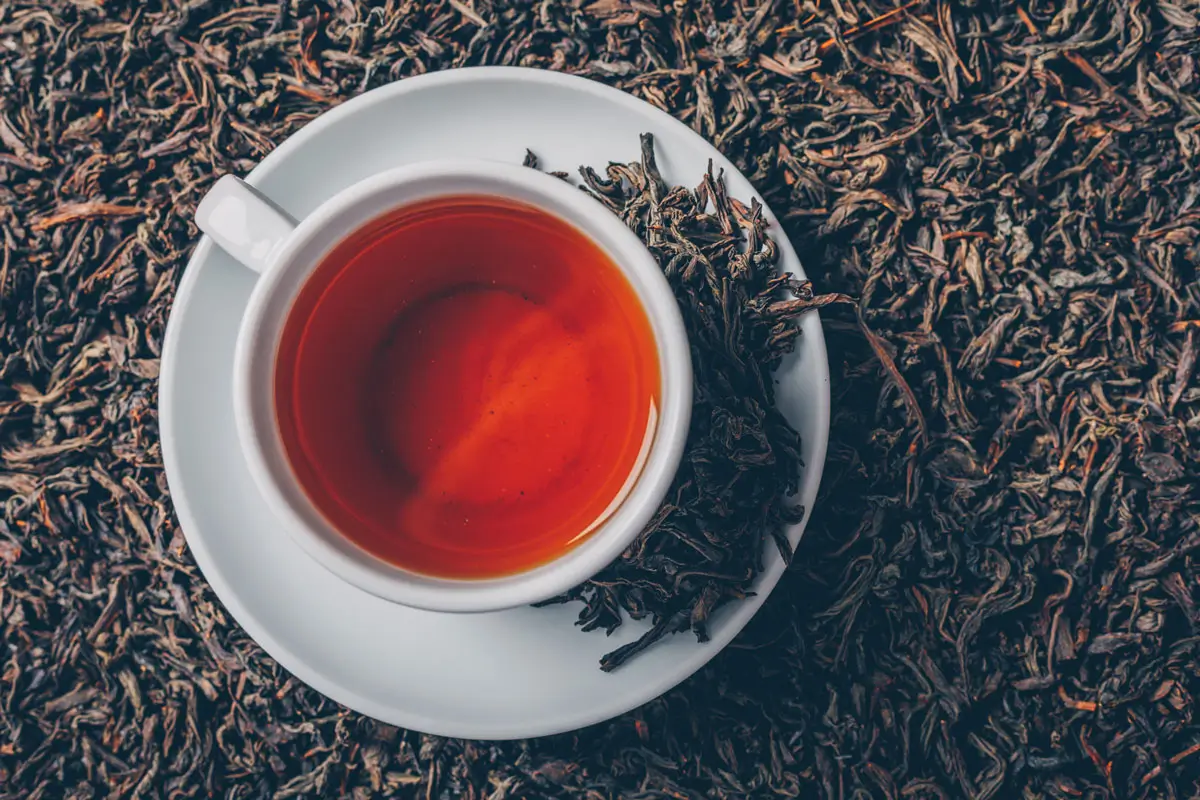
Gather the Necessary Ingredients and Equipment
To brew authentic Persian tea, you’ll need the following:
- High-quality black tea leaves (commonly known as CTC or Crush, Tear, Curl tea)
- A traditional Persian tea set, including a samovar (a metal urn used for boiling water) and a set of delicate glass teacups
- A tea strainer or infuser
- Granulated sugar (optional)
- Lemon slices (optional)
Prepare the Water
The key to brewing the perfect Persian tea lies in the water. Start by filling your samovar with fresh, cold water and place it over medium heat.
Bring the water to a rolling boil, as the high temperature is essential for extracting the full flavor and aroma of the tea leaves.
Steep the Tea
Once the water is boiling, add the tea leaves to a tea strainer or infuser and lower it into the samovar. Allow the tea to steep for 5-7 minutes, ensuring that the water remains at a rolling boil throughout the process.
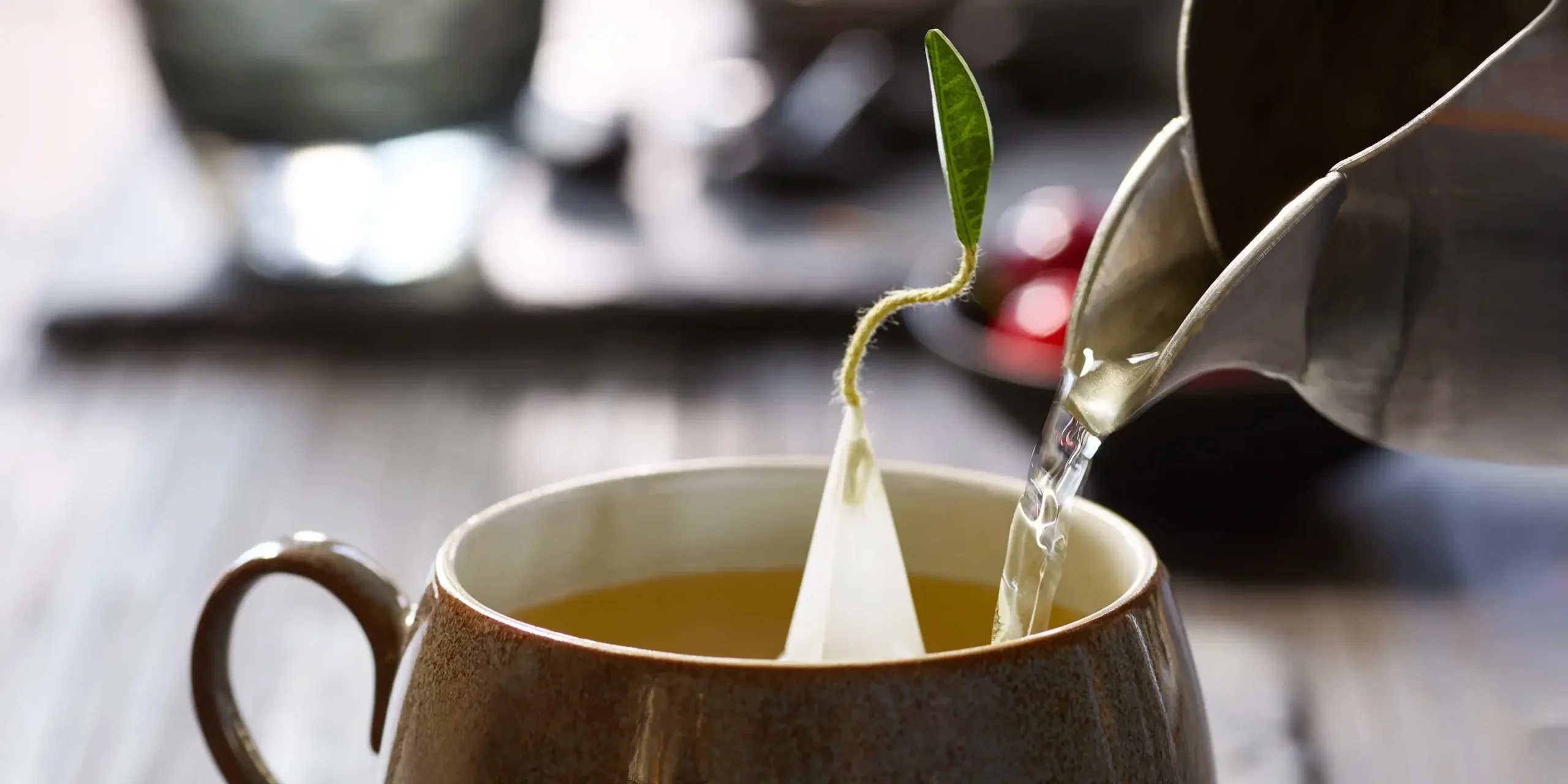
This prolonged steeping time is a crucial step in Persian tea-making, as it allows the tea leaves to fully infuse the water with their rich, robust flavor.
Pour and Serve
After the tea has steeped, it’s time to pour and serve. Carefully pour the hot tea into the delicate glass teacups, making sure to hold the teacup at an angle to allow the tea to flow smoothly and without splashing.
If desired, you can add a spoonful of granulated sugar to the tea, stirring gently to dissolve. Some Iranians also enjoy adding a slice of lemon to their tea, which can provide a refreshing citrus note to balance the robust flavor.
Savor and Enjoy
Finally, it’s time to sit back, relax, and savor the aromatic and flavorful Persian tea. Take the time to appreciate the ritual and the cultural significance of this timeless tradition.
Engage in conversation, share stories, and cherish the moment of tranquility and connection that a cup of Persian tea can inspire.
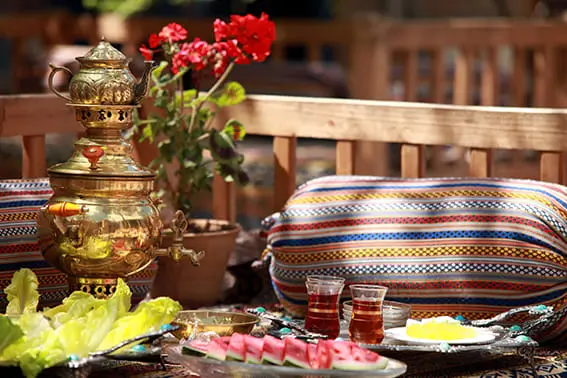
The Art of Pairing and Serving Persian Tea
While brewing the perfect cup of Persian tea is an art in itself, the way you pair and serve this beloved beverage can also enhance the overall experience.
Here are some tips to elevate your Persian tea ritual:
Pairing with Sweets and Savories
Persian tea is often accompanied by a variety of traditional sweets and savories, such as:
- Baklava: A flaky, honey-infused pastry
- Gaz: A nougat-like confection made with pistachios and rosewater
- Noon Panjereh: A buttery, lace-patterned cookie
- Kashk-e Bademjan: A savory eggplant and yogurt dip
The sweetness and richness of these delicacies pair beautifully with the robust and aromatic Persian tea, creating a harmonious balance of flavors.
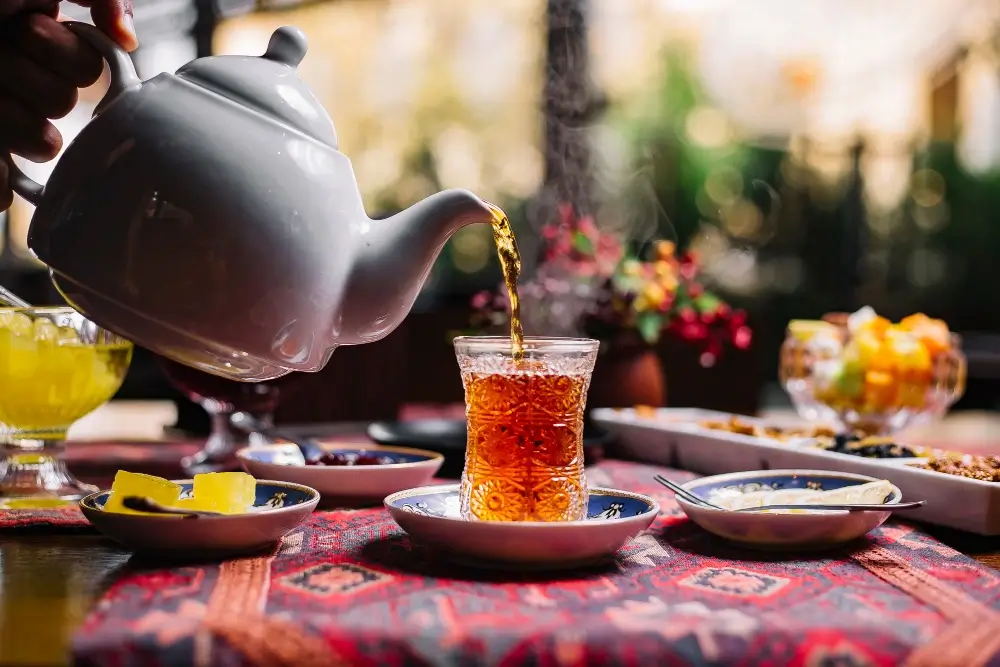
Serving in a Traditional Setting
To truly immerse yourself in the Persian tea experience, consider serving your tea in a traditional setting. This could include:
- Using a beautifully crafted samovar and delicate glass teacups
- Adorning the table with traditional Persian rugs, cushions, and decorative elements
- Playing soft, soothing Persian music in the background
- Engaging in lively conversation and sharing stories with friends and family
By creating a cozy and authentic atmosphere, you’ll be able to fully immerse yourself in the rich cultural traditions that surround the art of Persian tea.
Mastering the Art of Persian Tea-Making
Brewing the perfect cup of Persian tea may seem like a daunting task, but with a little practice and patience, you’ll be on your way to becoming a true tea connoisseur.
Remember, the key lies in the quality of the tea leaves, the precision of the brewing process, and the attention to detail in the overall presentation and experience.
Whether you’re hosting a formal gathering or simply enjoying a quiet moment of respite, the art of Persian tea-making is a tradition that is sure to captivate and delight.
